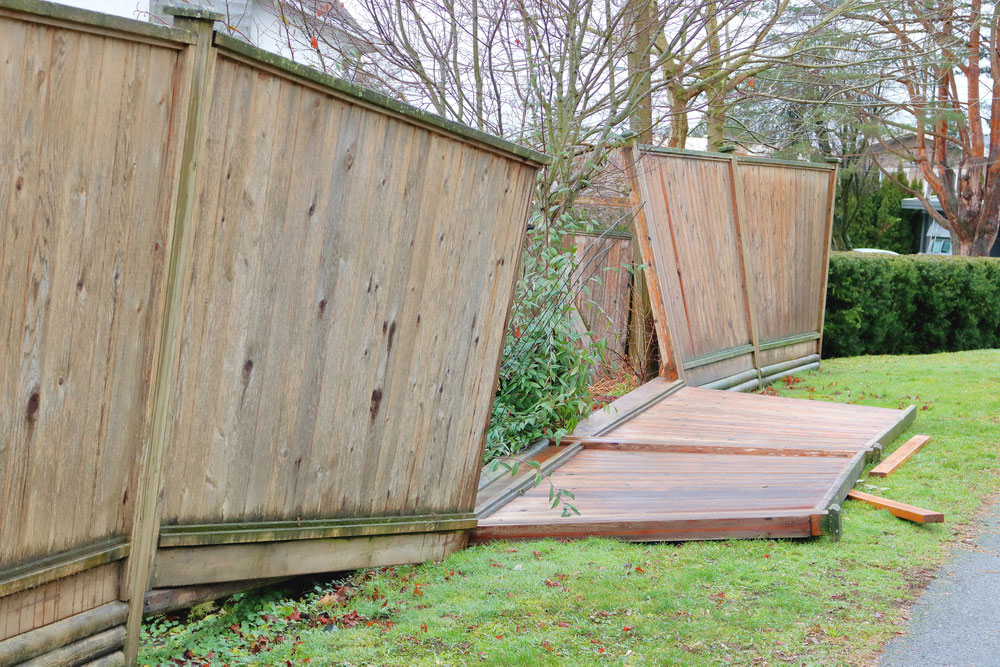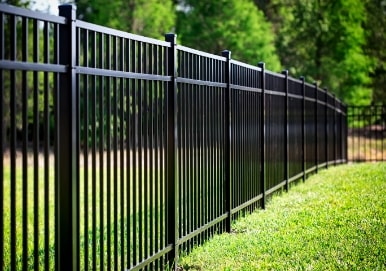Wooden fences can be a valuable addition to any property, as they offer both privacy and aesthetic appeal. However, they are vulnerable to damage from a variety of sources, including storms, pests, and general wear over time.
A damaged fence not only detracts from the appearance of your property but can also compromise security. Knowing how to tackle wooden fence repair effectively can help you restore the fence’s function and appearance without the need for costly replacements.

Identifying the Type of Damage
Before starting repairs, it is important to assess the damage thoroughly. Different types of damage require different approaches. For this reason, accurately identifying the issue will determine the tools and materials you will need.
Storm Damage
High winds, heavy rain, or even snow can cause significant damage to wooden fences. The most common problems include bent or broken panels, fallen posts, or damaged rails.
When assessing storm damage, check for any loose panels or sections that have been uprooted. If the fence has become misaligned, it may require structural reinforcement.
Rotting Wood
Wooden fences are susceptible to rot, particularly in the posts or the lower parts of the panels that are exposed to the ground. If the wood feels spongy or soft to the touch, it has likely rotted.
In this case, you will need to replace the damaged sections. Look for any signs of discoloration or crumbling wood, particularly at ground level, where moisture accumulates.
Pest Infestation
Wood is a food source for certain pests like termites and carpenter ants. If you notice signs of pests, such as small holes, sawdust piles, or hollow-sounding wood, it may be time to replace affected sections. You can treat the rest of the fence with pesticides to prevent further damage.
General Wear and Tear
Over time, natural wear and tear can cause sections of your fence to warp, crack, or loosen. This is especially common in fences that are exposed to the elements for extended periods. Cracked boards, split posts, or wobbly sections often indicate that repairs are necessary to prevent further deterioration.
Tools and Materials for Wooden Fence Repair
Once you have assessed the damage, gather the necessary tools and materials to perform the repairs. The specific tools will depend on the type of repair you are carrying out.
In general, you will need:
- Crowbar or Pry Bar: Useful for removing nails or lifting damaged sections of the fence.
- Hacksaw: Ideal for cutting through nails, screws, or damaged sections of wood.
- Hammer: Necessary for securing new nails or screws into the fence.
- Screws or Nails: Used for attaching new fence panels or posts.
- Wood Preservative: Helps to treat any remaining wood to prevent future rot or damage.
- Concrete: Used for securing new fence posts into the ground.
- Power Drill: Necessary for drilling holes for screws or bolts when installing new posts or rails.
- Level: Ensures that posts and panels are installed correctly and securely.
Step-by-Step Guide for Repairing Wooden Fence Panels
Removing the Damaged Panel
To begin repairing your wooden fence, you must first remove the damaged panel. Use a crowbar or pry bar to gently lift the panel away from its frame. If the panel is secured with nails, use a hammer to remove them or pull them out with combination pliers. If there are any stubborn nails, a hacksaw can help cut through them.
Once the panel is loose, carefully remove it from the posts. Make sure to assess the condition of the adjacent sections as well, since they may also need attention. If you are replacing the entire panel, make sure to dispose of the damaged one properly.
Replacing the Fence Post
The next step is to replace any damaged fence posts. Start by removing the old post. Dig around the base of the post using a digging spade to expose the concrete footing.
If the post is deeply embedded, it may take some effort to remove it. You can use a demolition bar to lift the post from the ground. For stubborn posts, consider using an electric breaker to break up any concrete surrounding the post.
Once you have removed the old post, measure the new post to make sure it is the correct size. If you are replacing the entire post, you may need to secure it with fresh concrete.
Mix the pre-mixed concrete according to the manufacturer’s instructions. After that, pour it into the hole around the base of the new post. Use a spirit level to check that the post is perfectly vertical. Allow the concrete to set before proceeding to the next steps.
Installing New Fence Panels
Once your post is securely in place, it is time to install the new panel. Align the new panel with the post, ensuring that it fits correctly. Attach the panel to the post with screws or nails, securing it firmly into place. Use a hammer to drive in nails or a power drill to screw in the fasteners, depending on your preference.
It is important to check the alignment of the panel with a level as you secure it. This will help make sure that your fence remains straight and visually appealing. If the panel is large or heavy, ask a friend for assistance to hold it in place while you secure it.
Reinforcing the Fence Post (If Necessary)
In some cases, a post may not need to be fully replaced but may simply need reinforcement. If the post is still sound but wobbly or leaning, consider using a concrete repair spur to stabilize it. Dig around the base of the post and insert the concrete spur into the ground.
Attach the spur to the existing post using coach bolts. Mix concrete and fill the hole around the spur to further secure the post. This will prevent any further movement and reinforce the stability of the fence.
Treating the Wood
Once the repairs are complete, treat the remaining sections of the fence with a wood preservative. This will help protect the wood from future rot and insect damage. Apply the preservative using a brush or sprayer, making sure to cover all exposed wood.
You may also want to consider applying a coat of paint or stain to the wood, both for protection and to enhance the appearance of the fence.
How to Repair a Rotten Wooden Fence Post
Rotting is one of the most common causes of damage to wooden fences, especially at the base of the post. If the post is rotten but still partially standing, it is important to replace or reinforce it before the entire fence collapses.
· Supporting the Post
To prevent the fence from collapsing during the repair, support the fence with timber braces on either side of the post. This will keep the fence intact while you work on the post.
· Digging the Hole
Using a shovel, dig a hole around the base of the fence post to expose the rotten section. Depending on the depth of the rot, you may need to saw off the damaged portion with a panel saw. Once the damaged section is removed, treat the remaining healthy wood with a wood preservative to protect it from further decay.
· Installing a Concrete Spur
To reinforce the post, use a concrete spur. Dig a hole large enough to fit the spur around the base of the post. Insert the spur and brace the post with timber props.
Coach bolts should be used to attach the spur to the post. Once the bolts are in place, fill the hole with concrete and smooth it out with a trowel. Allow the concrete to cure before removing the props and checking for stability.
Common Issues and How to Prevent Future Damage
Weatherproofing and Sealing
Wooden fences are particularly vulnerable to the elements. Constant exposure to rain, sun, and wind can cause wood to warp, crack, or rot over time. Applying a weatherproofing sealant can significantly extend the lifespan of your fence.
The sealant creates a protective barrier that helps keep moisture out and reduces the risk of rot and decay. Be sure to reapply the sealant every few years for maximum protection.
Regular Inspections
A proactive approach to fence maintenance involves regularly inspecting the entire fence for signs of wear. Look for loose nails, cracks in the wood, or any sections that seem unstable.
Checking your fence after storms or extreme weather conditions is also a good practice. Early detection of small problems can prevent them from escalating into more significant, costly repairs.
Treating for Pests
Pests such as termites and carpenter ants can cause significant damage to wooden fences. If you notice small holes, sawdust around the fence, or soft spots, these could be signs of an infestation.
Treat the affected areas with insecticide or consult a pest control professional for help. Regular treatments can prevent infestations and save your fence from extensive damage.
Ready to Repair Your Wooden Fence?
At Good Neighbor Fence, we are committed to helping you maintain the integrity of your fence. Our team specializes in wood fence design and installation and comprehensive repair services.
Whether you need to replace a panel, reinforce a post, or restore a weathered fence, we are here to guide you every step of the way.
Contact us today to get started with your fence design and installation process. Explore our fence types now.





